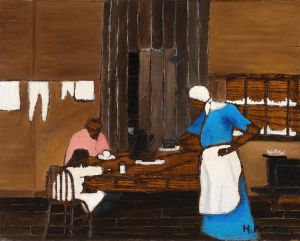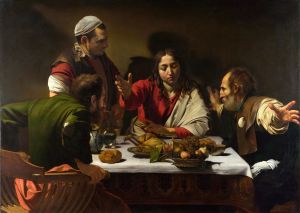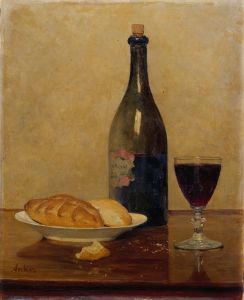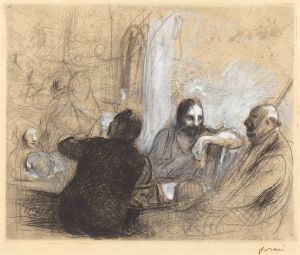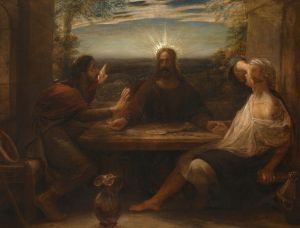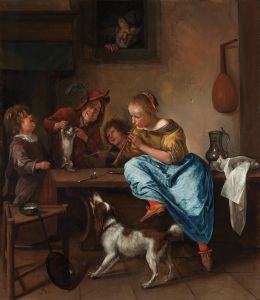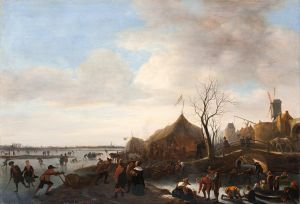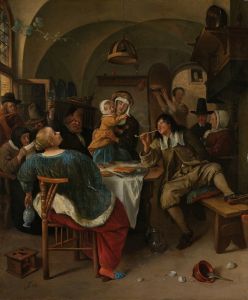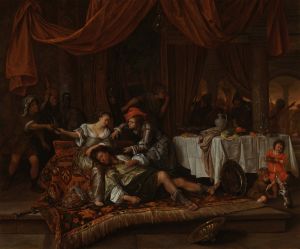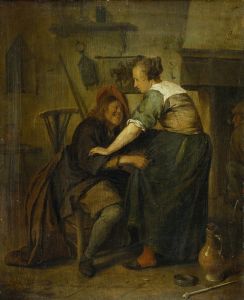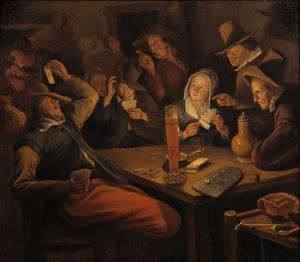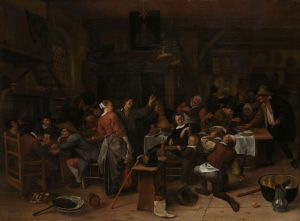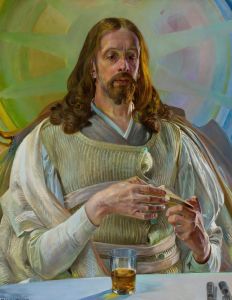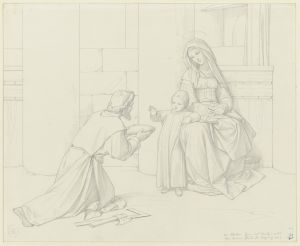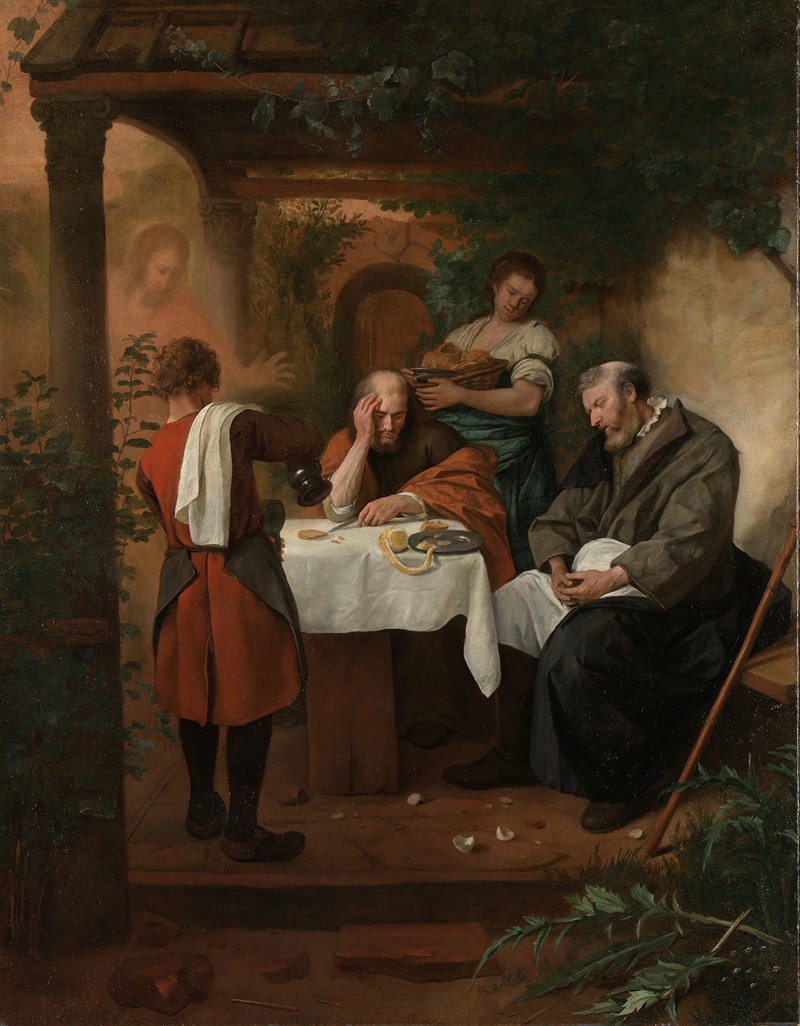
Supper at Emmaus
A hand-painted replica of Jan Steen’s masterpiece Supper at Emmaus, meticulously crafted by professional artists to capture the true essence of the original. Each piece is created with museum-quality canvas and rare mineral pigments, carefully painted by experienced artists with delicate brushstrokes and rich, layered colors to perfectly recreate the texture of the original artwork. Unlike machine-printed reproductions, this hand-painted version brings the painting to life, infused with the artist’s emotions and skill in every stroke. Whether for personal collection or home decoration, it instantly elevates the artistic atmosphere of any space.
Jan Steen, a prominent Dutch Golden Age painter, is known for his lively and often humorous depictions of everyday life. One of his notable works is "Supper at Emmaus," which showcases his ability to blend biblical themes with his characteristic style of genre painting. This painting is an interpretation of the biblical story from the Gospel of Luke, where Jesus, after his resurrection, appears to two of his disciples on the road to Emmaus and later reveals himself during a meal.
"Supper at Emmaus" by Jan Steen captures the moment of revelation when Jesus breaks bread with his disciples, and they recognize him. Steen's interpretation of this scene is unique in its approach, as he infuses the composition with a sense of domesticity and familiarity, characteristic of his genre scenes. The painting is set in a typical 17th-century Dutch interior, which would have been familiar to Steen's contemporaries, thus making the biblical story more relatable to the viewer.
In the painting, Steen employs his skillful use of color and light to draw attention to the central figures. Jesus is depicted with a serene and gentle expression, while the disciples exhibit a range of emotions, from surprise to awe, as they realize the identity of their guest. The use of chiaroscuro, a technique that contrasts light and dark, enhances the dramatic effect of the revelation moment. The warm tones and intricate details of the setting further add to the painting's inviting atmosphere.
Steen's composition is carefully balanced, with the figures arranged around a table laden with food, a common motif in his works. This not only emphasizes the theme of hospitality but also reflects the importance of communal meals in 17th-century Dutch culture. The inclusion of everyday objects and the realistic portrayal of the characters' expressions and gestures are typical of Steen's style, which often blurs the line between the sacred and the secular.
Jan Steen was known for his ability to convey moral lessons through his paintings, often using humor and satire. While "Supper at Emmaus" is a more solemn work compared to some of his other pieces, it still reflects his interest in human behavior and interaction. The painting invites viewers to reflect on themes of recognition, faith, and the divine presence in ordinary life.
Steen's "Supper at Emmaus" is a testament to his mastery of storytelling through art. By placing a biblical event in a familiar setting, he not only made the story accessible to his audience but also highlighted the timeless nature of its message. This work remains an important example of how artists of the Dutch Golden Age interpreted religious themes within the context of their own cultural and social environment.
Overall, Jan Steen's "Supper at Emmaus" is a compelling blend of religious narrative and genre painting, showcasing his unique ability to capture the essence of human experience through his art.





